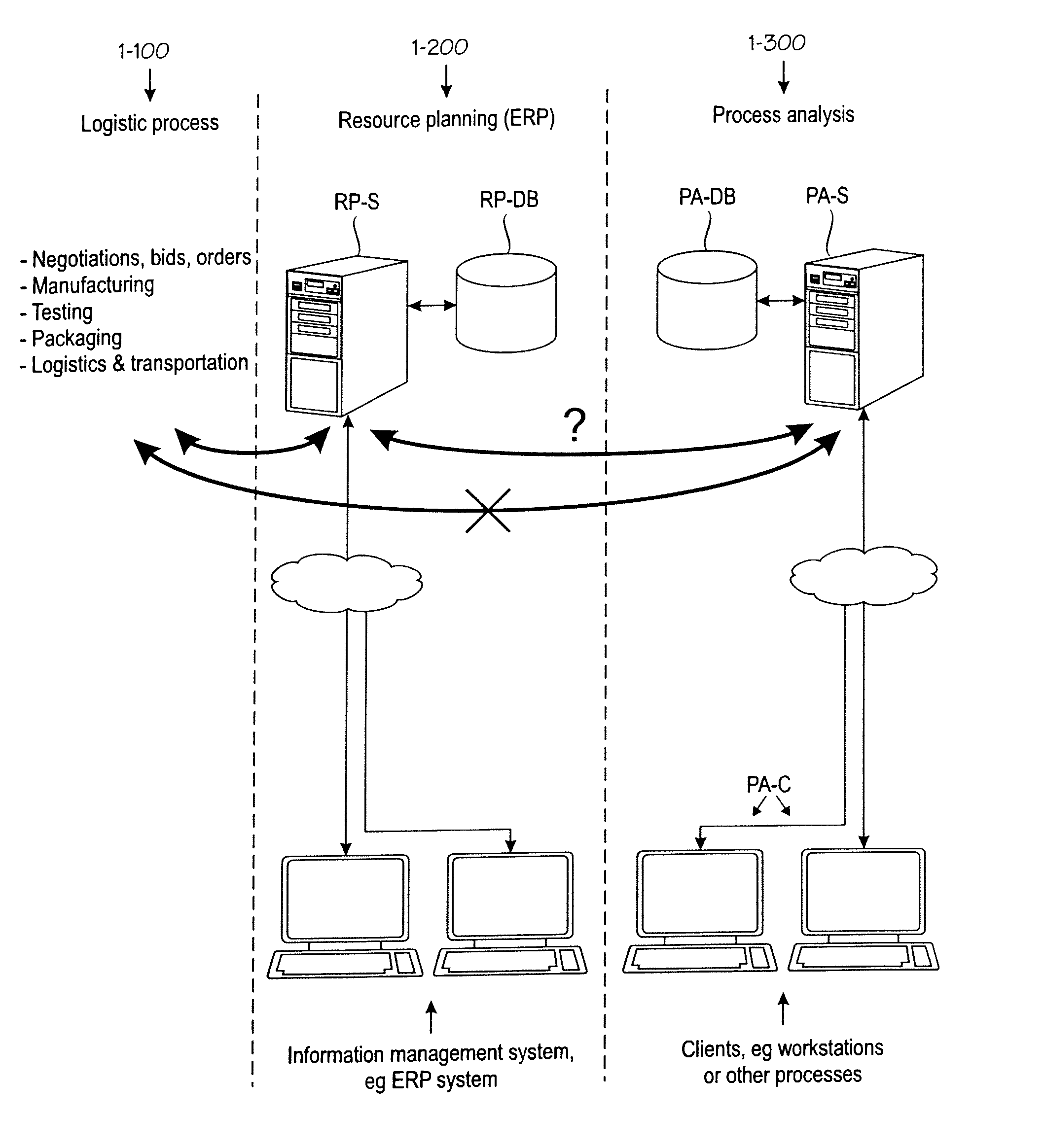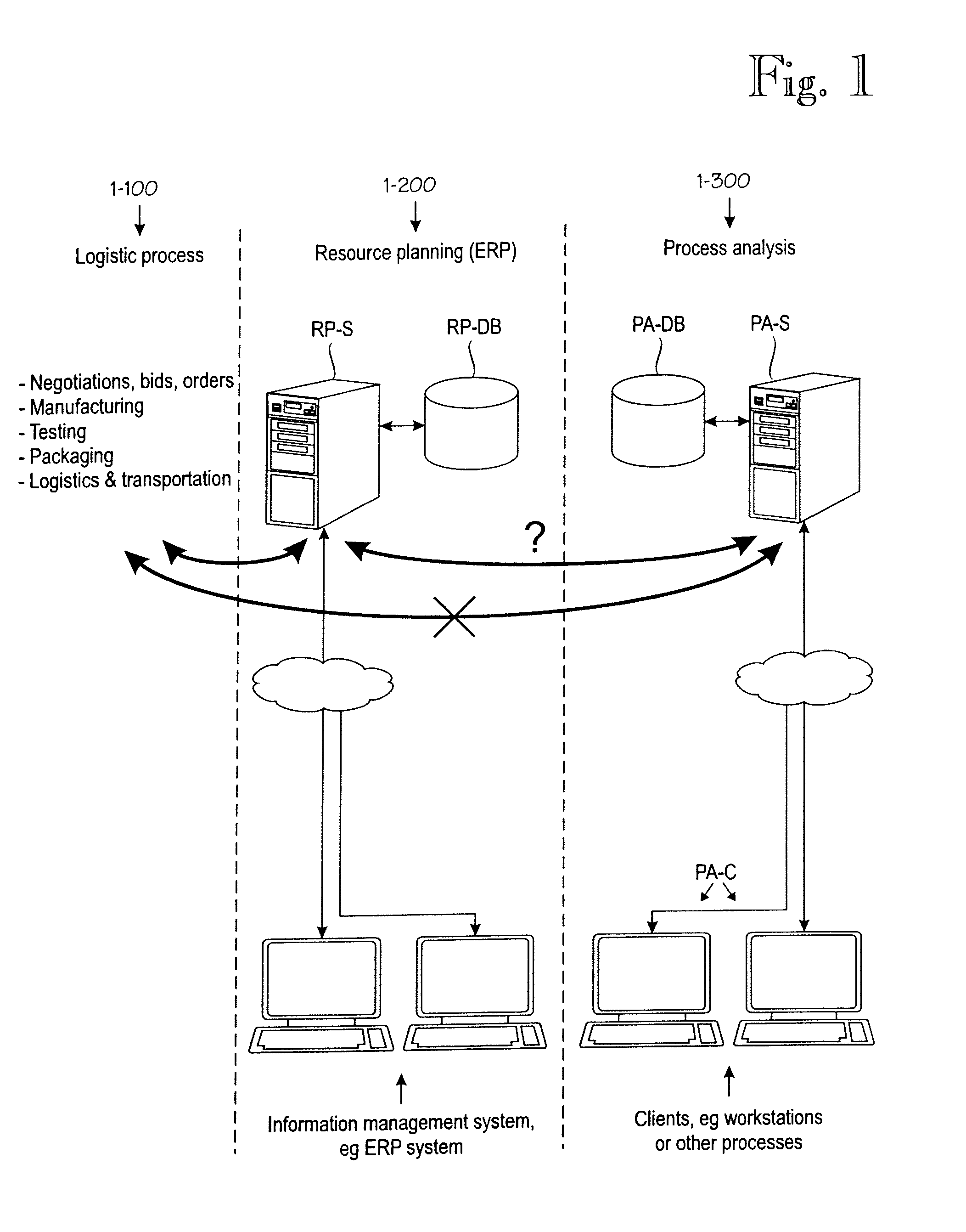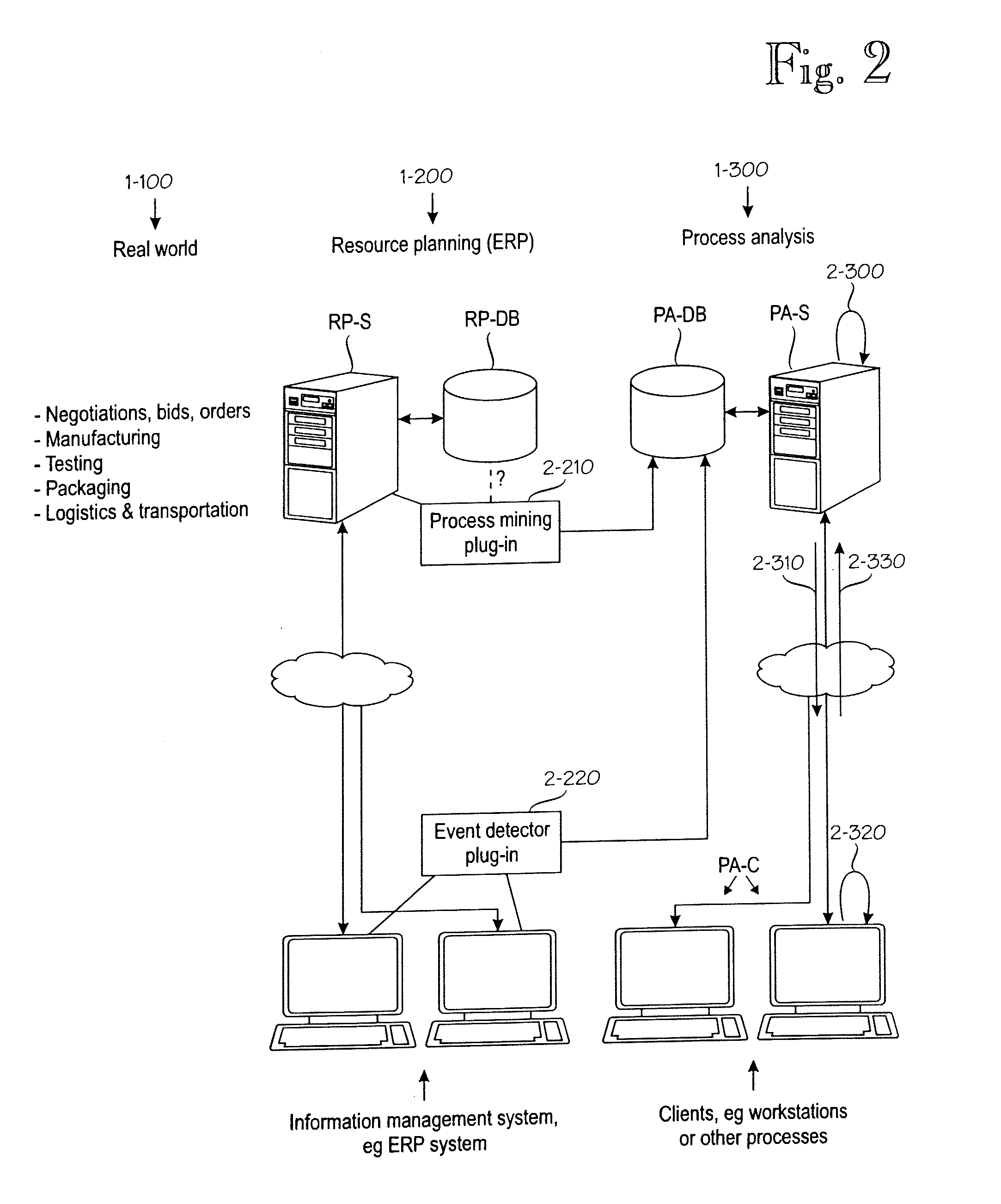Processing event instance data in a client-server architecture
a client-server and event instance technology, applied in the field of process instance data processing in a client-server architecture, can solve the problems of obsolete cached intermediate results, huge number of individual processes (process instances) in a typical erp system, and inability to couple the computer-implemented analysis system b>, etc., to achieve flexible deployment methods and easy and efficient creation.
- Summary
- Abstract
- Description
- Claims
- Application Information
AI Technical Summary
Benefits of technology
Problems solved by technology
Method used
Image
Examples
Embodiment Construction
[0202]FIG. 2 shows how the computer-implemented process analysis 1-300 system can be coupled to the information management system 1-200. In the following, the term “ERP” will be used as in illustrative but non-restrictive example of information management systems that support the real-world process 1-100. Reference sign PA-C generally denotes clients, which may be workstations or other processes accessing the process analysis system 1-300.
[0203]There are basically two ways to transfer data relating to the logistic processes 1-100 from ERP system 1-200 to the process analysis system 1-300. For instance, it is possible to provide the ERP system (or other information management system) with one or more data-mining plug-ins, one of which is denoted by reference numeral 2-210. The data-mining plug-ins are configured to find data relevant for process analysis within the and transfer such data to the process analysis system 1-300. Alternatively or additionally, it is possible to provide th...
PUM
 Login to View More
Login to View More Abstract
Description
Claims
Application Information
 Login to View More
Login to View More - R&D
- Intellectual Property
- Life Sciences
- Materials
- Tech Scout
- Unparalleled Data Quality
- Higher Quality Content
- 60% Fewer Hallucinations
Browse by: Latest US Patents, China's latest patents, Technical Efficacy Thesaurus, Application Domain, Technology Topic, Popular Technical Reports.
© 2025 PatSnap. All rights reserved.Legal|Privacy policy|Modern Slavery Act Transparency Statement|Sitemap|About US| Contact US: help@patsnap.com



